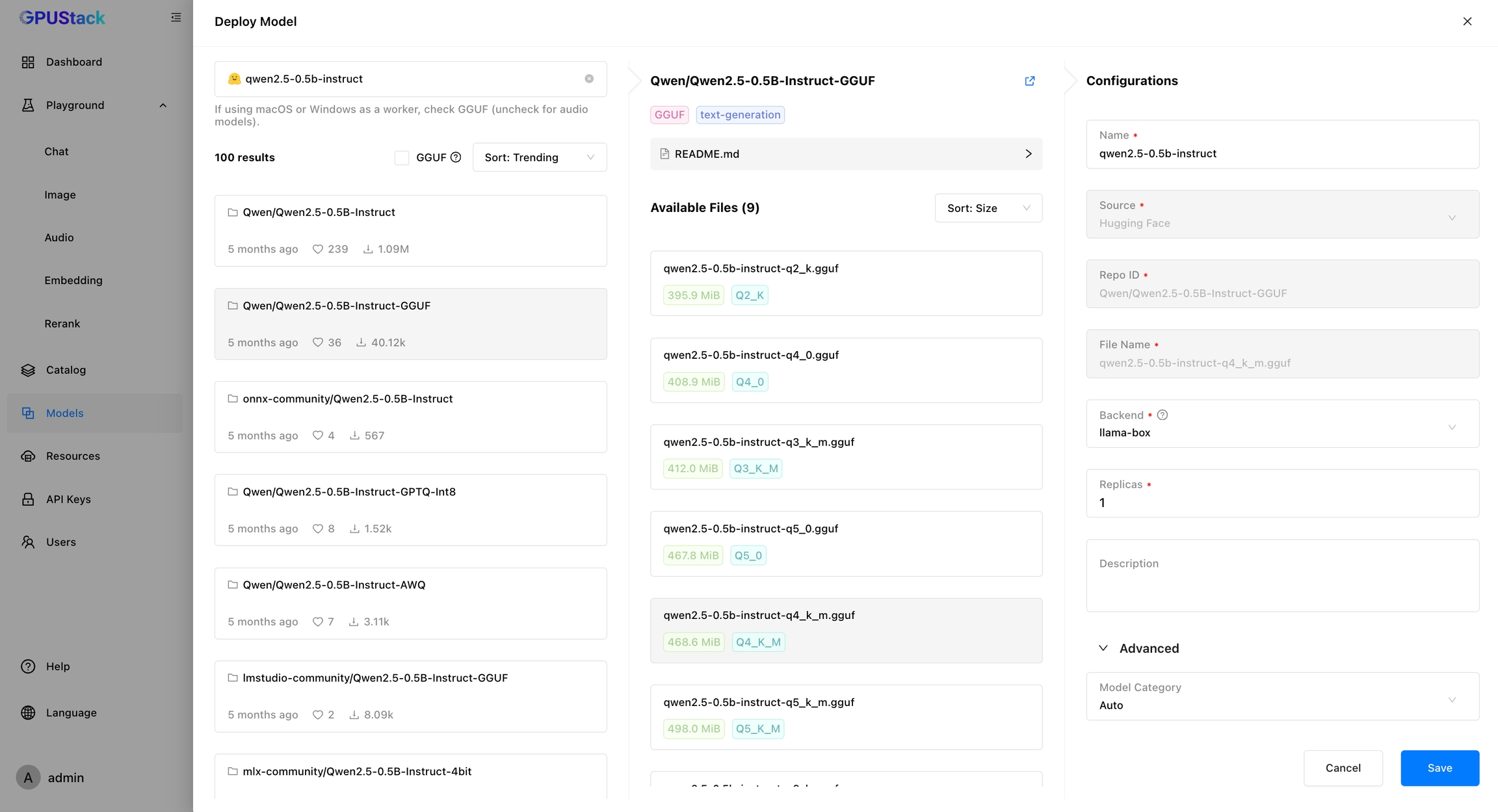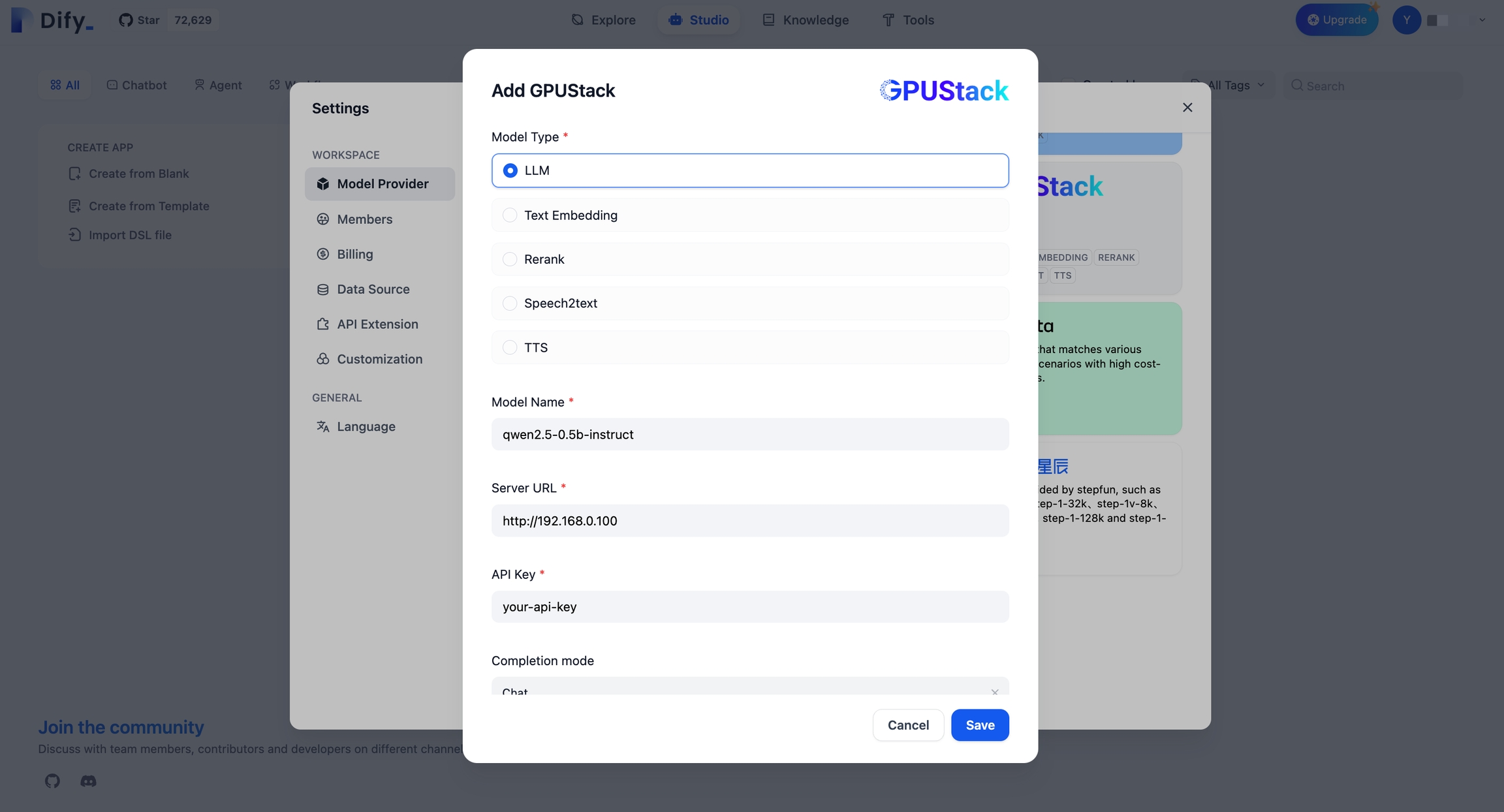Integrating with GPUStack for Local Model Deployment
GPUStack is an open-source GPU cluster manager for running AI models.
Dify allows integration with GPUStack for local deployment of large language model inference, embedding, reranking, speech to text and text to speech to capabilities.
Deploying GPUStack
You can refer to the official Documentation for deployment, or quickly integrate following the steps below:
Linux or MacOS
GPUStack provides a script to install it as a service on systemd or launchd based systems. To install GPUStack using this method, just run:
curl -sfL https://get.gpustack.ai | sh -s -Windows
Run PowerShell as administrator (avoid using PowerShell ISE), then run the following command to install GPUStack:
Invoke-Expression (Invoke-WebRequest -Uri "https://get.gpustack.ai" -UseBasicParsing).ContentThen you can follow the printed instructions to access the GPUStack UI.
Deploying LLM
Using a LLM hosted on GPUStack as an example:
In GPUStack UI, navigate to the "Models" page and click on "Deploy Model", choose
Hugging Facefrom the dropdown.Use the search bar in the top left to search for the model name
Qwen/Qwen2.5-0.5B-Instruct-GGUF.Click
Saveto deploy the model.

Create an API Key
Navigate to the "API Keys" page and click on "New API Key".
Fill in the name, then click
Save.Copy the API key and save it for later use.
Integrating GPUStack into Dify
Go to
Settings > Model Providers > GPUStackand fill in:Model Type:
LLMModel Name:
qwen2.5-0.5b-instructServer URL:
http://your-gpustack-server-ipAPI Key:
Input the API key you copied from previous steps
Click "Save" to use the model in the application.

For more information about GPUStack, please refer to Github Repo.
Last updated